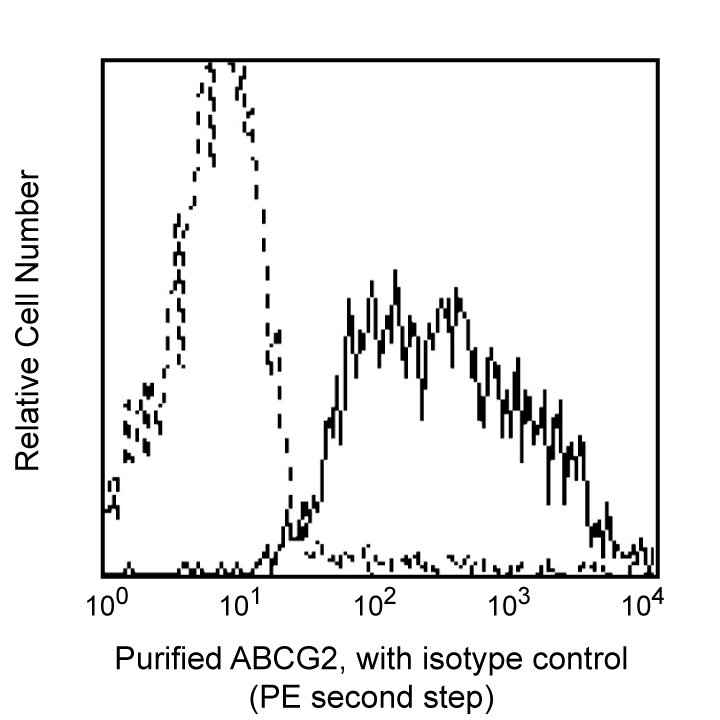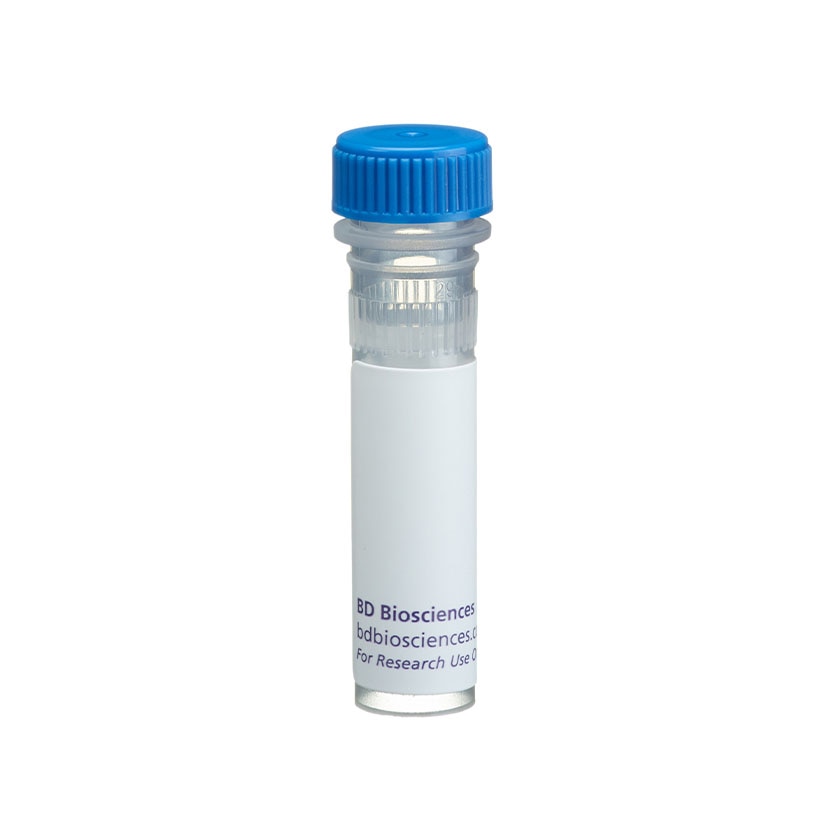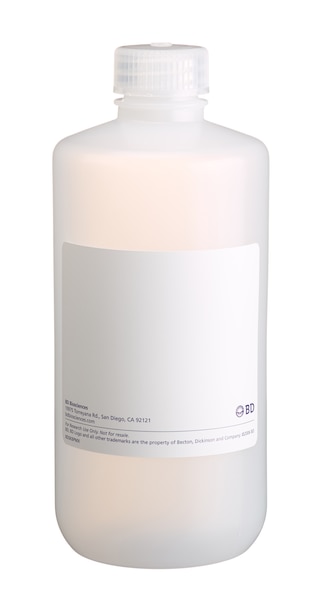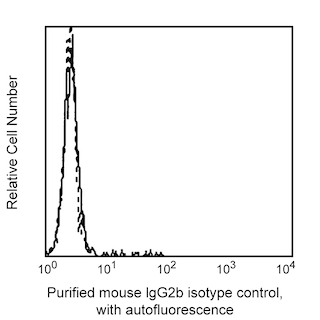Old Browser
This page has been recently translated and is available in French now.
Looks like you're visiting us from {countryName}.
Would you like to stay on the current country site or be switched to your country?




Flow cytometric analysis of CD338 expression on MCF7-BCRP cells. MCF7-BCRP cells were stained with either Purified Mouse Anti-Human CD338 (Cat. No. 552823; solid line histogram) or Purified Mouse IgG2b κ Isotype Control (Cat. No. 555740; dashed line histogram), followed by PE Goat Anti-Mouse Ig (Multiple Adsorption) (Cat. No. 550589). Fluorescent histograms were derived from gated events with the side and forward light-scattering characteristics of viable cells.


BD Pharmingen™ Purified Mouse Anti-Human CD338

Regulatory Status Legend
Any use of products other than the permitted use without the express written authorization of Becton, Dickinson and Company is strictly prohibited.
Preparation And Storage
Product Notices
- Since applications vary, each investigator should titrate the reagent to obtain optimal results.
- An isotype control should be used at the same concentration as the antibody of interest.
- Caution: Sodium azide yields highly toxic hydrazoic acid under acidic conditions. Dilute azide compounds in running water before discarding to avoid accumulation of potentially explosive deposits in plumbing.
- Sodium azide is a reversible inhibitor of oxidative metabolism; therefore, antibody preparations containing this preservative agent must not be used in cell cultures nor injected into animals. Sodium azide may be removed by washing stained cells or plate-bound antibody or dialyzing soluble antibody in sodium azide-free buffer. Since endotoxin may also affect the results of functional studies, we recommend the NA/LE (No Azide/Low Endotoxin) antibody format, if available, for in vitro and in vivo use.
- Please refer to www.bdbiosciences.com/us/s/resources for technical protocols.
Companion Products


.png?imwidth=320)
The 5D3/CD338 monoclonal antibody specifically binds to an epitope of ABCG2 (BCRP1), a multi-drug resistance protein that is a member of ATP binding cassette (ABC) transporters. It is highly expressed on primitive stem cells as identified by the "side-population" (SP) phenotype. This SP phenotype is based on the efflux of fluorescent dyes such as Rhodamine 123 and Hoechst 33342. The expression of ABCG2 appears to be highly conserved as it has been identified in various species. Studies show that highly purified murine stem cells express BCRP1 mRNA and this expression declines sharply as the stem cells express CD34. The highest levels of BCRP1 mRNA expression have been seen in KDR+ human stem cells. ABCG2/BCRP1 was clustered as CD338 in the HLDA8 workshop.
Development References (4)
-
Bunting KD. ABC transporters as phenotypic markers and functional regulators of stem cells. Stem Cells. 2002; 20(1):11-20. (Biology). View Reference
-
Ozvegy-Laczka C, Laczkó R, Hegedus, et al. Interaction with the 5D3 monoclonal antibody is regulated by intramolecular rearrangements but not by covalent dimer formation of the human ABCG2 multidrug transporter. J Biol Chem. 2008; 283(38):26059-26070. (Clone-specific: Flow cytometry). View Reference
-
Zhou S, Schuetz JD, Bunting KD, et al. The ABC transporter Bcrp1/ABCG2 is expressed in a wide variety of stem cells and is a molecular determinant of the side-population phenotype. Nat Med. 2001; 7(9):1028-1034. (Clone-specific: Flow cytometry). View Reference
-
Zola H, Swart B, Nicholson I, et al . CD molecules 2005: human cell differentiation molecules . Blood. 2005; 106(9):3123-3126. (Clone-specific). View Reference
Please refer to Support Documents for Quality Certificates
Global - Refer to manufacturer's instructions for use and related User Manuals and Technical data sheets before using this products as described
Comparisons, where applicable, are made against older BD Technology, manual methods or are general performance claims. Comparisons are not made against non-BD technologies, unless otherwise noted.
For Research Use Only. Not for use in diagnostic or therapeutic procedures.
Report a Site Issue
This form is intended to help us improve our website experience. For other support, please visit our Contact Us page.